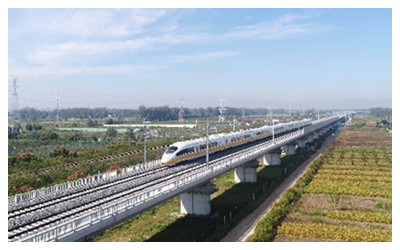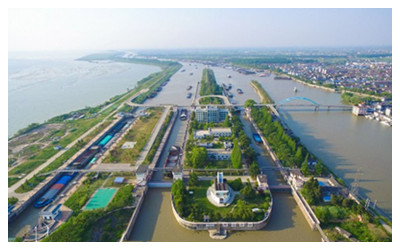Skype: neodalle-travel
Tel: +86 135 7447 2266
E-mail: sales@visitaroundchina.com
 The two railway lines of Beijing-Shanghai Railway and Longhai Railway pass through the territory of Jiangsu Province. The Beijing-Shanghai Railway mainly runs east-west through the south of Jiangsu. The Longhai Railway also runs east-west through the northernmost part of Jiangsu. Xuzhou is the hub of the two major trunks. The Nanjing-Shanghai section of the Beijing-Shanghai Railway is one of the busiest railways in China, with trains passing every 5 minutes during peak hours.
The two railway lines of Beijing-Shanghai Railway and Longhai Railway pass through the territory of Jiangsu Province. The Beijing-Shanghai Railway mainly runs east-west through the south of Jiangsu. The Longhai Railway also runs east-west through the northernmost part of Jiangsu. Xuzhou is the hub of the two major trunks. The Nanjing-Shanghai section of the Beijing-Shanghai Railway is one of the busiest railways in China, with trains passing every 5 minutes during peak hours.
By Bus
 By the end of the year, the province of Jiangsu highway mileage was 160,000 kilometers. Among them, the highway mileage is 4710 kilometers. The main frame of the “four vertical, four horizontal and four links” expressway network in the first round of Jiangsu Province was completed, including Beijing-Shanghai Expressway, Shenhai Expressway, Shanghai-Nanjing Expressway, Sujiahang Expressway, Lianxu Expressway and Yanjing Expressway. Highway, Yangshuo Expressway, Ningsu Xu Expressway, Nanjing-Hangzhou Expressway, Yanjiang Expressway, Xuji Expressway, Ninglian Expressway, etc.
By the end of the year, the province of Jiangsu highway mileage was 160,000 kilometers. Among them, the highway mileage is 4710 kilometers. The main frame of the “four vertical, four horizontal and four links” expressway network in the first round of Jiangsu Province was completed, including Beijing-Shanghai Expressway, Shenhai Expressway, Shanghai-Nanjing Expressway, Sujiahang Expressway, Lianxu Expressway and Yanjing Expressway. Highway, Yangshuo Expressway, Ningsu Xu Expressway, Nanjing-Hangzhou Expressway, Yanjiang Expressway, Xuji Expressway, Ninglian Expressway, etc.
By the end of 2016, the density of rural roads in Jiangsu reached 138 km/100 km2, and the rural road network density and high-grade highways were the leading in the country. Visitor can take tour bus or long distance bus to travel any tonws or cities in Jiangsu Province.
By Waterway
Facing the Yellow Sea, Jiangsu Province has the Yangtze River and the Beijing-Hangzhou Grand Canal to cross-shaped throughout the province. The water network of the Taihu Plain and the Lixiahe Plain is densely distributed. Water transport has always played an important role in the transportation system of Jiangsu Province. All rely on the advantages of water transport to develop and prosper.
Jiangsu is a major port province. Among the 53 major ports in China announced by the Ministry of Transport, there are 7 in Jiangsu; among the 25 major ports in the coastal area, there are 5 in Jiangsu. Nanjing Port, Nantong Port and Zhenjiang Port are among the 25 major coastal ports in the country. Lianyungang is one of the country's 25 major coastal ports, 12 regional central ports and one of Jiangsu's key container trunk ports. Xuzhou Port and Wuxi Port are among the 28 major inland river ports in the country. Taicang Port is one of the key container ports in Jiangsu.
By the end of 2016, Jiangsu had a total mileage of 24,366 kilometers of inland waterway, accounting for 1/5 of the total mileage of China's waterways. The total mileage of the province's graded waterways is 8,709 kilometers, of which the high-grade waterways of Grade 4 and above are 3042 kilometers. The mileage of the graded waterways and the fourth-class navigation channels ranks first in China.
 Ask Questions ?
Ask Questions ?